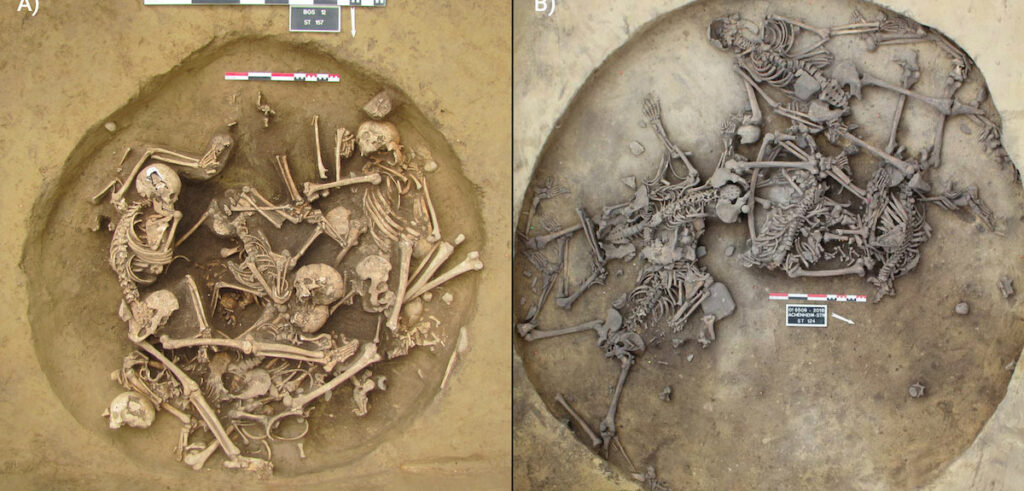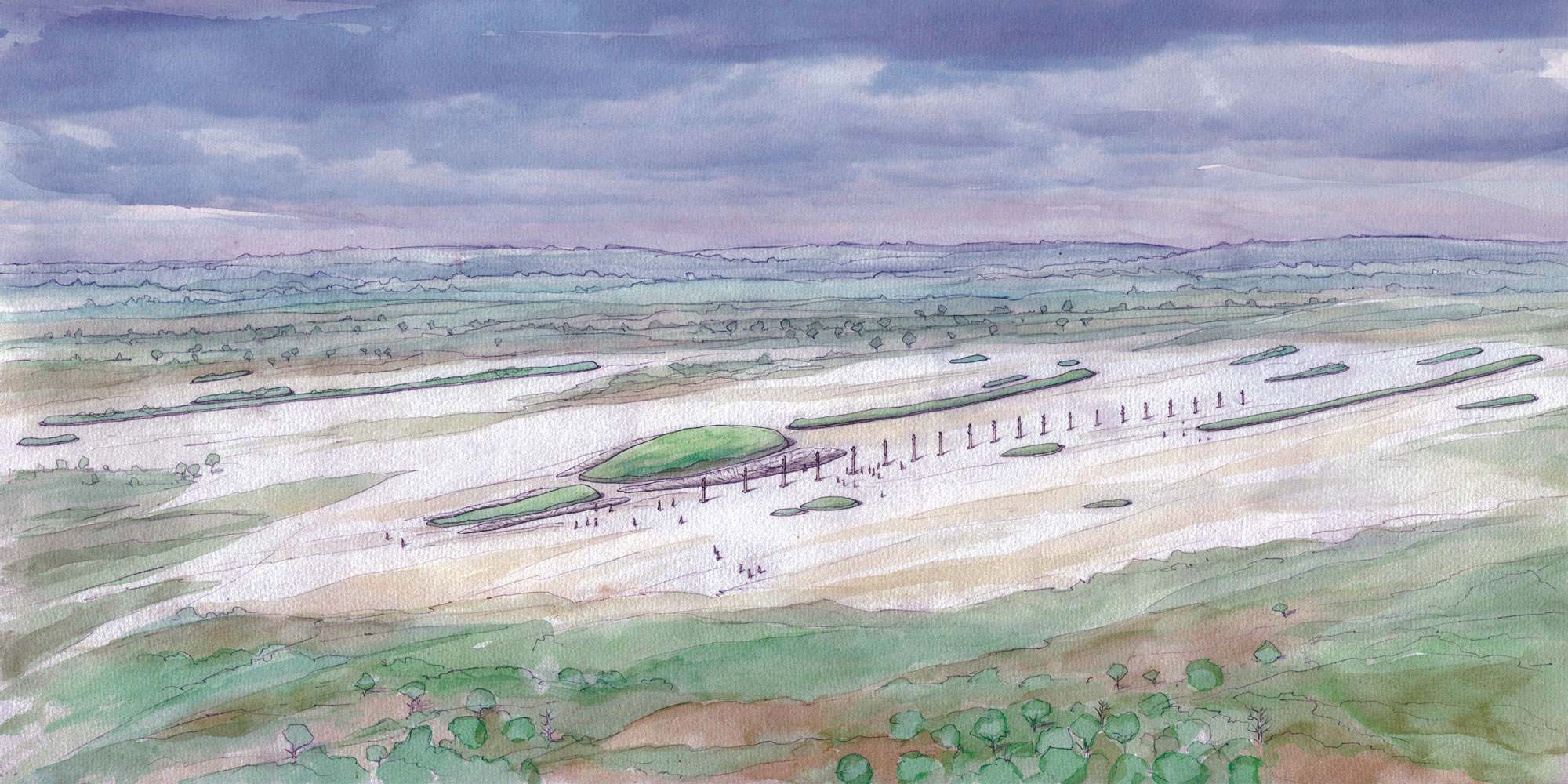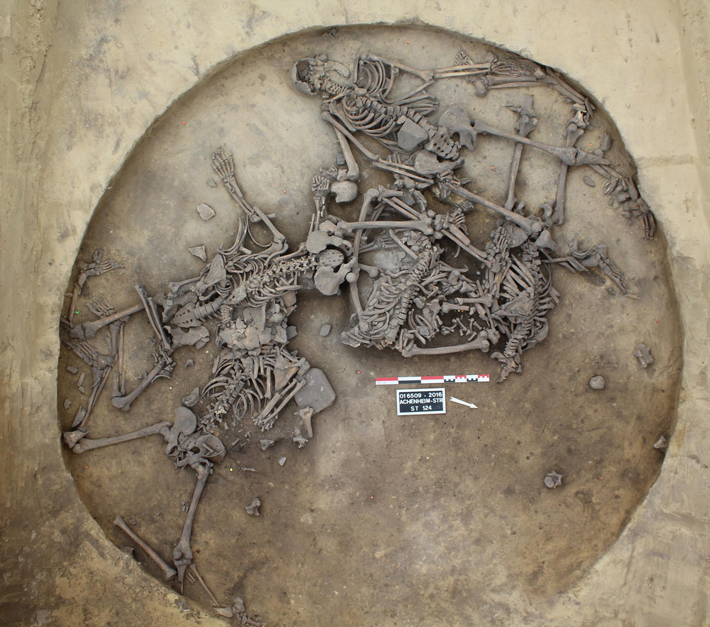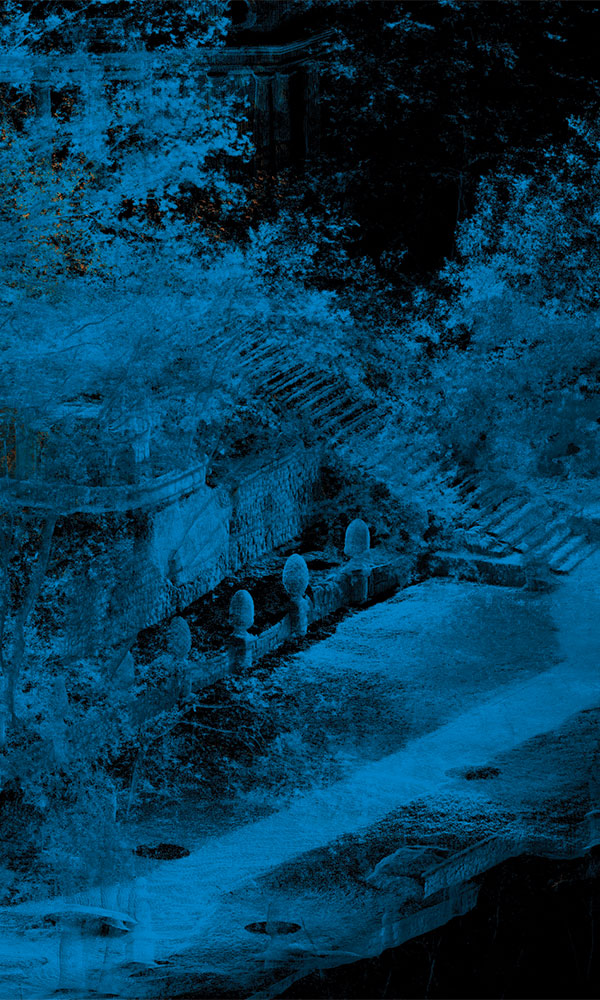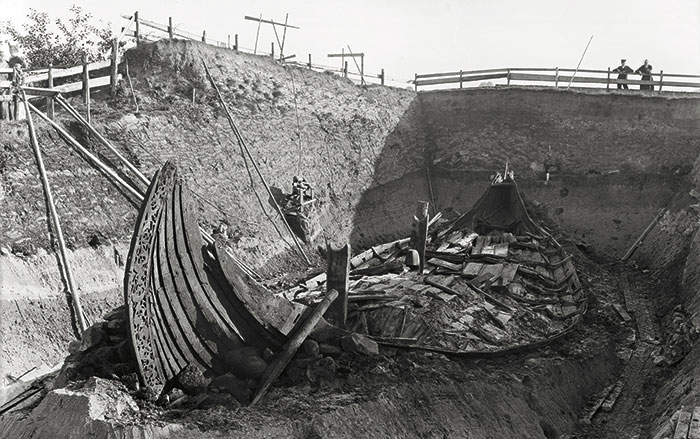ALSACE, FRANCE—A decade ago, archaeologists made a grisly discovery when they unearthed two Neolithic mass graves at the sites of Bergheim and Achenheim in northeastern France. The pits contained severed limbs and human skeletons, evidence of excessive violence and mutilation that did not match normal Neolithic patterns. Some deceased individuals buried in other nearby graves, however, showed no signs of brutality. A new study has recently analyzed the chilling remains to try and reconstruct the identities of the individuals and determine why some were treated so cruelly, according to a statement released by the University of Oxford. Researchers led by University of Valladolid archaeologist Teresa Fernández-Crespo conducted multi-isotopic analysis on 82 people who had been buried at the sites between 4300 and 4150 b.c. to ascertain information about diet, movement, and possible relocation. The results indicated that the individuals who had been violently cut down had different dietary habits than those whose remains showed no signs of trauma. They also seemed to have moved around frequently during their lifetimes and were likely outsiders to the region. Specialists concluded that this group of foreigners was likely taken captive during a battle or raid and subjected to violent execution and torture as part of a local ritual intended to humiliate the enemy and reinforce social unity. Dismembered limbs were likely taken as trophies of war. “These findings speak to a deeply embedded social practice—one that used violence not just as warfare, but as spectacle, memory, and assertion of dominance,” said Oxford archaeologist Rick Schulting. Read the original scholarly article about this research in Science Advances. For more, go to "Culture Clash."
